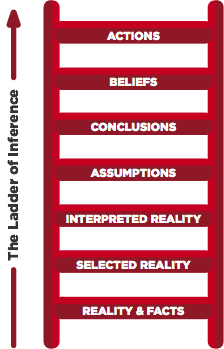In the ever closer growing world, where competition is tough on Wednesday, and the whole market disrupted on Thursday, organisations need to tackle tomorrow’s problems and leverage upcoming opportunities today.
Let’s fast forward to the future and see what 2019 has in store for us.
One thing is clear: It has never been harder to predict the future. Things aren’t getting any less volatile, uncertain, complex or ambiguous. Globalisation demands seemingly paradoxical things from organisations: to be local and global, competitive and collaborative as well as steadfast and transient at the same time.
The political tension between the two biggest economies of the world - U.S. and China - is foreseen to impact the rest of the world (Forbes, December 2018). Globally, this will likely implicate uncertainty for economic growth in 2019.
Uncertain Economy for Asia in 2019
Regarding Asia, VTB Capital economist Neil McKinnon states: “The downside risks from an unresolved U.S.-China trade dispute looks like spilling into 2019, much to the detriment of world trade volumes and Asian GDP growth” (Forbes, December 2018).
The markets of Singapore and Malaysia are the ones that may be effected the most, for they have highest participation rates in global value chains and open economies in terms of trade.
In short, 2019 will be a year in which organisations will operate in an uncertain, global environment. They will need to put all effort into staying of value in the future. So, what does this mean for HR?
The Need for an Agile Learning Leadership & Employees
Staying up to date and learning new skills is crucial for everyone and every organisation that wants to stay of value in the future. Your employees and especially your leadership needs to be agile in learning.
It’s very comfortable to be in the position of knowing how to do things. Feeling like we’re on top of things gives us peace of mind and makes us feel good. To be an agile learner, we need to let go of this sense of security and step out of our comfort zones to learn new skills.
How to Increase Learning Agility
The Learning Agility Model by Burke (2017) lists 9 practical ways on how to increase learning agility:
1. Research
Doing research to increase knowledge as a base for decision making.
2. Collaboration
Working together as a team, sharing knowledge and leveraging diverse skillsets.
3. Interdependence
Actively depending on others, being open to ask for, receive and extend help.
4. Flexibility
Exercising openness to try new ways of doing things.
5. Speed
Rapidly finding new ideas and following through with a right sense of urgency.
6. Inquiring
Investigating and experimenting with new ideas.
7. Risk Taking
Being courageous to step out of the comfort zone, taking on challenges.
8. Growth Oriented
Actively seeking feedback, striving to move forward.
9. Reflective
Using data to analyse and evaluate effectiveness.
These are ways in which your leadership and employees can be more agile in learning new things, which will contribute to staying of value in the global, fast changing and uncertain markets our organisations are part of.
To make sure your people aren’t just learning for the sake of it, but actually adding value, they need to have clarity about what they need to be doing to stay of value:
Making Sure to Head in the Right Direction
Following a strategy that was formed months or even years ago, can keep people busy and even productive. If not kept up to date, these strategies can be based on assumptions that are no longer valid. Just carrying on as usual equals taking the wrong path and may result in your organisation loosing its value in the market.
To make sure your organisation is heading in the right direction, leaders must be strong conceptual thinkers which entails being able to understand implications, drawing inferences and taking the right kind of actions.
How to Draw Inferences
The Ladder of Inference (Argyris) visualises the process of how we get from reality and facts to the actions we take.

The strategies that lead our daily actions were once formed on a selected past reality (Step 2) that was interpreted (Step 3). From these interpretations, assumptions were formed (Step 4) on which conclusions were drawn (Step 5). From these conclusions stem the beliefs (Step 6) on which our actions are based (Step 7).
As you know, the reality we are in constantly changes. Our strategies however are based on the reality and facts of the past. To not head into the wrong direction, leaders must continuously review the first step, the reality and facts and be mindful of getting a good understanding of this in order to select the right reality from which to draw inferences.
Equipped with an agile learning workforce that is ready to respond to unexpected challenges and difficulties and that is taking actions based on the current and relevant reality is the key to staying relevant in 2019.
Only by this will an organisation be able to deal with the seemingly paradox requirements that the market poses (like staying local and global, competitive and collaborative as well as steadfast and transient at the same time).
What can you do, to help your organisation stay relevant, today?

